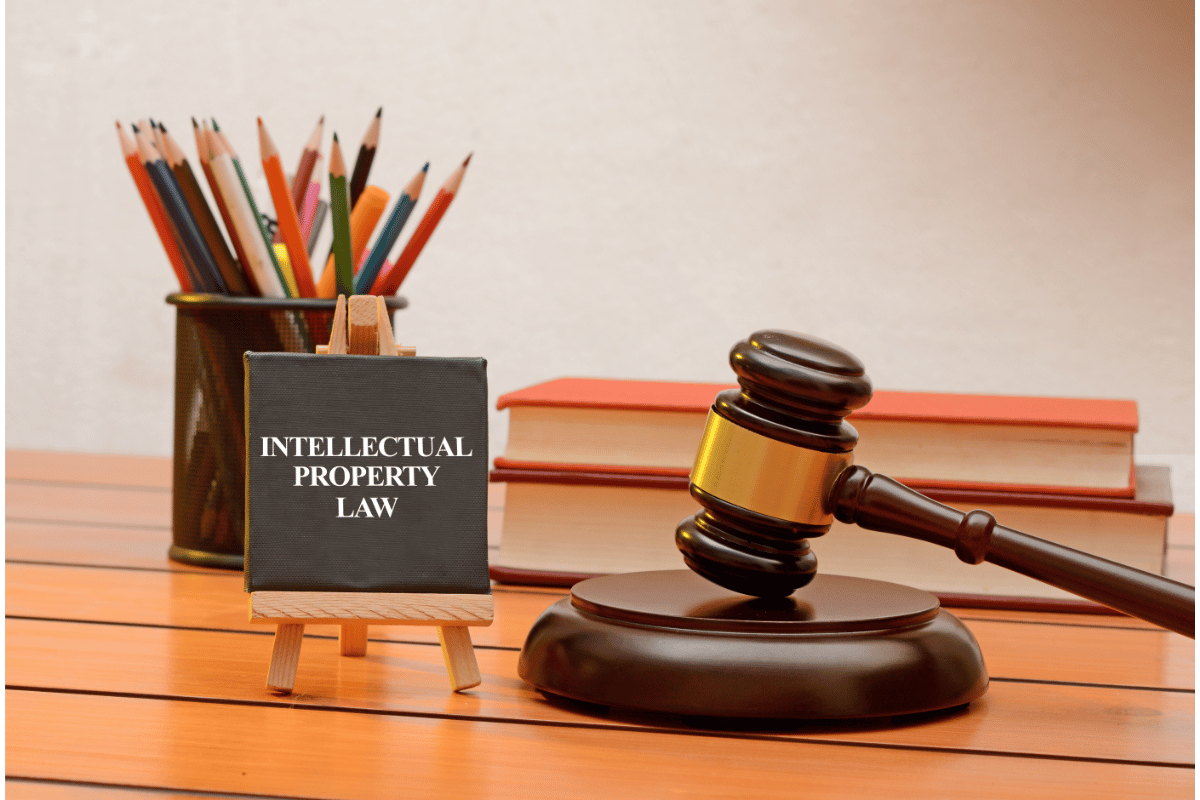Intellectual Property: Navigating Legal Complexities
In the realm of intellectual property, the intricate web of legal complexities can present significant challenges for creators and innovators alike. Navigating the nuances of IP laws requires a keen understanding of not only the foundational principles but also the evolving landscape shaped by digital advancements.
As disputes over copyrights, trademarks, and patents persist, the need for a proactive and comprehensive approach to safeguarding intellectual assets becomes increasingly apparent. By exploring the strategies and considerations involved in protecting intellectual property, individuals and organizations can position themselves for success in a world where innovation and legal compliance intersect.
Key Takeaways
- Understand diverse IP laws to navigate legal complexities effectively.
- Secure proper permissions and provide attribution for third-party content.
- Educate on fair use principles for lawful use of copyrighted material.
- Seek expert legal guidance to enforce and protect intellectual property rights.
Understanding Intellectual Property Fundamentals
Understanding the core principles of intellectual property is foundational to navigating the intricate landscape of legal protection and rights surrounding creative works and innovations. Within this context, it is essential to address copyright misconceptions and grasp trademark basics.
Copyright misconceptions often lead to inadvertent infringements, emphasizing the need for a clear understanding of what constitutes protected works and fair use. On the other hand, trademark basics involve recognizing the significance of distinctive marks that differentiate goods or services in the market.
Mastering these fundamental concepts is crucial for creators, innovators, and businesses to safeguard their intellectual property assets and avoid legal disputes. By delving into copyright misconceptions and trademark basics, individuals can better protect their creative endeavors and innovations within the bounds of the law.
Addressing Copyright Infringement Risks
Navigating the landscape of intellectual property involves proactively addressing the risks associated with copyright infringement in order to protect creative works and innovations effectively. Mitigating infringement risks is essential in safeguarding intellectual property.
Adhering to copyright compliance best practices is crucial for ensuring that one’s works are adequately protected. This includes obtaining the necessary permissions for using third-party materials, attributing sources appropriately, and staying informed about copyright laws and regulations.
Implementing robust monitoring mechanisms and enforcing IP rights can help deter potential infringements. By taking proactive measures and staying compliant with copyright laws, individuals and organizations can reduce the likelihood of facing legal challenges related to copyright infringement and safeguard their intellectual property rights effectively.
Navigating Fair Use Doctrine
Mitigating copyright infringement risks is paramount in the realm of intellectual property, particularly when considering the nuanced landscape of the Fair Use Doctrine. Fair use limitations permit the use of copyrighted material for specific purposes such as criticism, news reporting, research, education, and parody.
Transformative use, where the original work is altered significantly, is often a key factor in determining fair use. Parody exceptions allow for the use of copyrighted material for comedic or satirical purposes.
Educational purposes are also typically considered fair use, as long as the use is for teaching, scholarship, or research. Understanding these nuances and abiding by the guidelines set forth by the Fair Use Doctrine is crucial in navigating the complexities of intellectual property law.
Managing Digital Age Challenges
The evolution of digital technology presents unprecedented challenges in the realm of intellectual property protection and enforcement.
- Enforcing online rights becomes complex due to the borderless nature of the internet.
- Digital infringement risks are heightened with the ease of sharing and replicating digital content.
- Monitoring and addressing digital infringements require advanced technological solutions and legal expertise to navigate the intricacies of online platforms.
In this digital age, intellectual property holders must adapt to new ways of protecting their creations while being vigilant against unauthorized use. The rapid pace of technological advancements necessitates continuous evaluation and adjustment of strategies to safeguard intellectual property rights in the ever-changing digital landscape.
Implementing Global IP Strategies
Effective implementation of global intellectual property (IP) strategies requires a thorough understanding of international legal frameworks and cultural nuances. Cultural considerations play a significant role in the successful protection of IP rights across different countries.
International treaties, such as the TRIPS Agreement, WIPO treaties, and the Paris Convention, provide a framework for harmonizing IP laws globally. Companies operating on a global scale need to adapt their IP strategies to comply with these treaties and navigate the complexities of various legal systems.
Enhancing IP Protection Measures
To further fortify global intellectual property (IP) strategies, companies must proactively enhance their measures for IP protection in response to evolving legal landscapes and technological advancements.
Implementing technology safeguards, such as encryption and access controls, can bolster defenses against cyber threats.
Developing IP awareness programs that educate employees on the importance of IP rights and best practices can help create a culture of vigilance and respect for intellectual property assets.
Regular training sessions and communication campaigns can reinforce the value of IP protection throughout the organization, fostering a proactive approach to safeguarding valuable intangible assets.
Safeguarding Trade Secrets
Implementing robust protocols for safeguarding trade secrets is paramount in ensuring the protection of valuable confidential information within organizations. Protecting proprietary information from unauthorized access and preventing corporate espionage are critical components of maintaining a competitive edge in the market. Companies must establish strict access controls, encryption methods, and employee training programs to safeguard trade secrets effectively. Below is a table outlining essential measures for safeguarding trade secrets:
| Safeguarding Trade Secrets | Description |
|---|---|
| Access Controls | Restricting access to sensitive information |
| Encryption Methods | Securing data through encryption techniques |
| Employee Training Programs | Educating staff on the importance of confidentiality |
| Non-Disclosure Agreements | Formal agreements to prevent information leakage |
| Regular Audits | Conducting periodic assessments to ensure compliance |
Educating on IP Rights
In the realm of intellectual property, educating stakeholders on their rights is a fundamental aspect of ensuring compliance and protection. It is essential to conduct thorough employee training on IP responsibilities to mitigate risks and foster a culture of respect for intellectual property.
Navigating the intricacies of intellectual property can be challenging. Whether it’s addressing copyright infringement risks or implementing international IP strategies, having the right legal expertise is crucial. That’s where firms like Heer Law come in. They are well-equipped to guide businesses and individuals through the legal complexities associated with protecting their innovations.
Legal compliance should be a top priority, and educational initiatives must be implemented to raise awareness about the importance of respecting IP rights. By emphasizing the significance of IP protection through training programs and educational campaigns, organizations can instill a sense of responsibility among employees and reduce the likelihood of inadvertent infringements.
Ultimately, a well-informed workforce is key to safeguarding intellectual property assets and upholding ethical standards within the industry.
Ensuring Legal Compliance and Protection
Educating stakeholders on their intellectual property rights sets the foundation for organizations to ensure legal compliance and protection in the ever-evolving landscape of intellectual property law. Compliance guidelines and risk assessment are essential components to navigate the legal implications and implement effective protection measures. Organizations must conduct thorough risk assessments to identify potential vulnerabilities and establish robust compliance guidelines. This proactive approach helps mitigate legal risks and ensures adherence to intellectual property laws. Protection measures such as implementing confidentiality agreements, monitoring and enforcing IP rights, and seeking legal counsel for complex issues play a pivotal role in safeguarding intellectual property assets. By prioritizing legal compliance and protection, organizations can strengthen their position in the competitive marketplace.
| Compliance Guidelines | Risk Assessment | Legal Implications |
|---|---|---|
| Conduct thorough risk assessments | Identify vulnerabilities | Mitigate legal risks |
| Establish robust compliance guidelines | Ensure adherence to IP laws | Strengthen legal position |
Conclusion
In conclusion, intellectual property protection is crucial in today’s digital age, with copyright infringement risks and global challenges on the rise.
According to a recent study, it was found that intellectual property theft costs the global economy billions of dollars annually, highlighting the importance of implementing robust IP protection measures.
By understanding the fundamental principles, addressing legal complexities, and enhancing compliance strategies, individuals and organizations can safeguard their creative works and innovations effectively.






